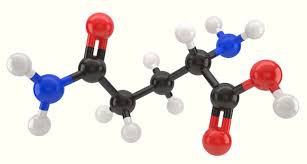Content of the Article
"What is glycine?” The question is among the questions asked.
glycine; It is an amino acid that it uses to create the proteins that tissues need for growth, protection, and production of important substances such as hormones and enzymes.
The body naturally produces glycine from other amino acids. But it is also found in protein-rich foods and can be used as a dietary supplement.
"What is glycine?” Let's consider the issue in a little more detail. “What good is glycine?” “What does glycine contain?” Let's give place to curious information such as.
What is glycine?
Your body glutathione It is one of the three amino acids it uses to make. Glutathione is one of the body's most important and effective antioxidants.
enough glycine amino body without acid, oxidative stressIt produces less glutathione, which can negatively affect the control of your body over time.
Also, as glutathione levels naturally decrease with age, glycine deficiency can occur as we age.

- The component of creatinine is: This amino acid is also creatine It is one of three amino acids it uses to make a compound called Creatine has beneficial effects on bone health, brain function, and neurological conditions such as Parkinson's and Alzheimer's disease. The body can naturally produce creatine. It can be obtained from food. But glycine deficiency reduces creatine production.
- Collagen is the main amino acid: collagenIt is a structural protein with a high content of glycine. It provides strength for muscle, skin, cartilage, blood, bone and ligaments. It is important to get enough glycine to support the body's collagen production.
What are the benefits of glycine?
“What is glycine?” After answering the question, let's take a look at the benefits of glycine.
Improves sleep quality
- One of the functions of glycine is that it has a calming effect on the brain.
- It helps to fall asleep by lowering core body temperature.
Protects the liver from alcohol-related damage
- Too much alcohol has harmful effects, especially on the liver.
- One study states that this amino acid may reduce the harmful effects of alcohol on the liver by preventing inflammation.
Protects the heart
- Studies show that one of the benefits of glycine is that it protects against heart disease.
- This amino acid improves the body's ability to use nitric oxide, an important molecule that increases blood flow and lowers blood pressure.
Benefits for type 2 diabetes
- Type 2 diabetes can lead to low glycine levels.
- Higher levels of glycine provide a reduced risk of type 2 diabetes, even after taking into account other factors associated with the condition, such as lifestyle.
Protects against muscle loss
- This amino acid can reduce muscle wasting, aging, malnutrition, and a condition that occurs when the body is under stress, for example cancer or severe burns.
Protects joints and cartilage
- Along with other amino acids found in bone broth (especially proline), glycine plays a role in collagen formation by promoting the growth and function of joints, tendons and ligaments.
- About one-third of collagen consists of glycine. Collagen is essential for building connective tissue that keeps joints flexible and can withstand shock.
Improves digestion
- Glycine helps form the two most important substances that make up the intestinal lining: collagen and gelatin.
- Collagen and gelatin help people with food allergies and sensitivities to tolerate foods more easily.
Slows the effects of aging
- Glycine helps form glutathione, a valuable antioxidant used to prevent cellular damage and various signs of aging.
What foods contain glycine?
- Bone broth is one of the greatest sources of naturally occurring glycine and other amino acids.
- For those who cannot consume bone broth, this amino acid can also be obtained from plant foods.
- Plant-based sources include vegetables such as beans, spinach, kale, cauliflower, kale and pumpkin; There are fruits such as bananas and kiwi.
- Apart from bone broth, glycine is also found in complete protein sources (animal proteins) such as meat, dairy products, poultry, eggs, and fish.
References: 1










